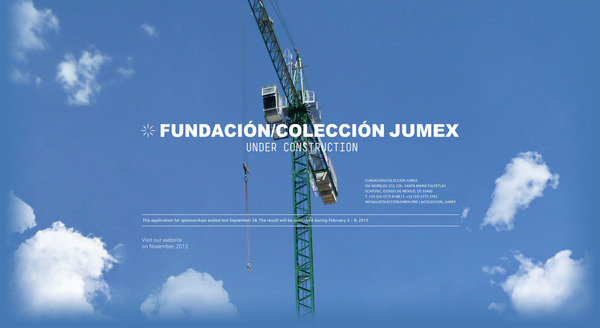Guy de Cointet
dal 2/12/2012 al 23/2/2013
Segnalato da
2/12/2012
Guy de Cointet
Fundacion Coleccion Jumex, Ecatepec
Tempo Rubato. The exhibition, curated by Magali Arriola, includes a wide range of works: from the first encrypted drawings and books, to the later monologues, set designs and theatrical productions inspired by the current events of his time, mass media and popular culture.

curated by Magalí Arriola
After discussing the Italians' skill of performing with their hands while they're talking as if improvising on a melody, Rosa and Butch—the main characters in Guy de Cointet and Robert Wilhite's Iglu—converse about what they understand by tempo rubato. In their exchange, the musical term that refers to the expressive and rhythmic freedom of the performer who shapes music by introducing variations to the tempo of the original score, is now a matter of performative speech. This very sense of practiced spontaneity in the production of meaning is what gives substance to Guy de Cointet's synesthetic practice, whose associations of shapes, words, and body language manage to undermine the social values and cultural codes that administer our day-to-day lives.
The exhibition Guy de Cointet: Tempo Rubato includes a wide range of works: from the first encrypted drawings and books, to the later monologues, set designs and theatrical productions inspired by the current events of his time, mass media, and popular culture. Growing up in a military family, de Cointet had a marked fascination for the encrypted languages used during World War II, and the everyday dynamics generated around them, that he further associated with the manipulative character of the media.
Finding inspiration in such diverse territories as domestic conversations, Mexican soap operas, literary passages and pre-Columbian codices, de Cointet conceived, over the years, a series of situations in the form of graphics and performable texts that, like lost or misplaced moments, manage to escape the routine of daily life. In these situations, words generate images that become narratives without a plot. These narratives-in-the-making are deployed in space as characters activate objects, and as the identity of these objects shifts, making them acquire a life of their own that manages to unsettle and transcend the ordinary.
This exhibition, unprecedented in Mexico, represents not only an occasion for the work to travel to a territory that was familiar to the artist, but it provides viewers with the opportunity to delve into a seldom-explored terrain, one where painting, sculpture, storytelling and performance intermingle –and one that has gained new resonance, perhaps responding to the need to conceive different methods of recounting oft-told stories, stories in which art may now turn into an indispensable prop to deal with everyday life.
About Fundación/Colección Jumex
Fundación/Colección Jumex was created in 2001 to promote production, advance research, and encourage critical thinking about contemporary art at an international level. Today it has become one of the most important contemporary art collections in Latin America. Through its exhibitions and extensive grant and scholarship programs, Fundación/Colección Jumex works to generate innovative research and curatorial proposals to stimulate reflection about contemporary art worldwide, and encourage the creation of new institutional models for the support of arts and culture. Based in Ecatepec (in the outskirts of Mexico City), where it has a gallery and an extensive library specialized in contemporary art, Fundación/Colección Jumex will be opening a new multidisciplinary space in Mexico City in 2013. The new 4,000-square-meter building, designed by British architect David Chipperfield, will greatly increase its exhibition space and bring this important artistic and bibliographic resource to a wider audience.
Press contact:
Mariana Huerta +52 (55) 57758188, EXT. 116 — difusion@lacoleccionjumex.org
Opening December 3, 2012
Fundación/Colección Jumex
Vía Morelos 272, Col. Santa María Tulpetlac Ecatepec
Hours: Monday through Friday, 10:00 am-5:00 pm



